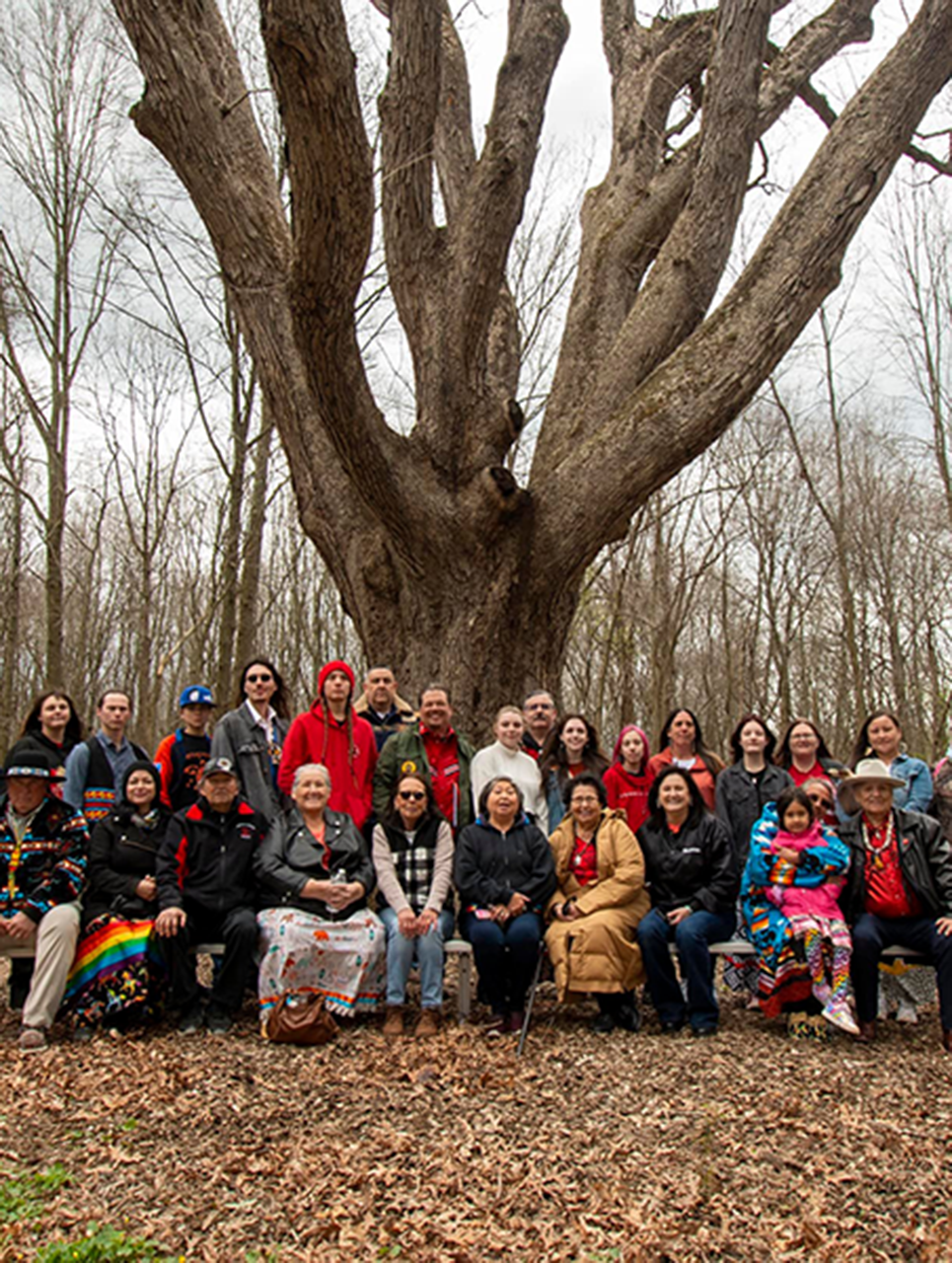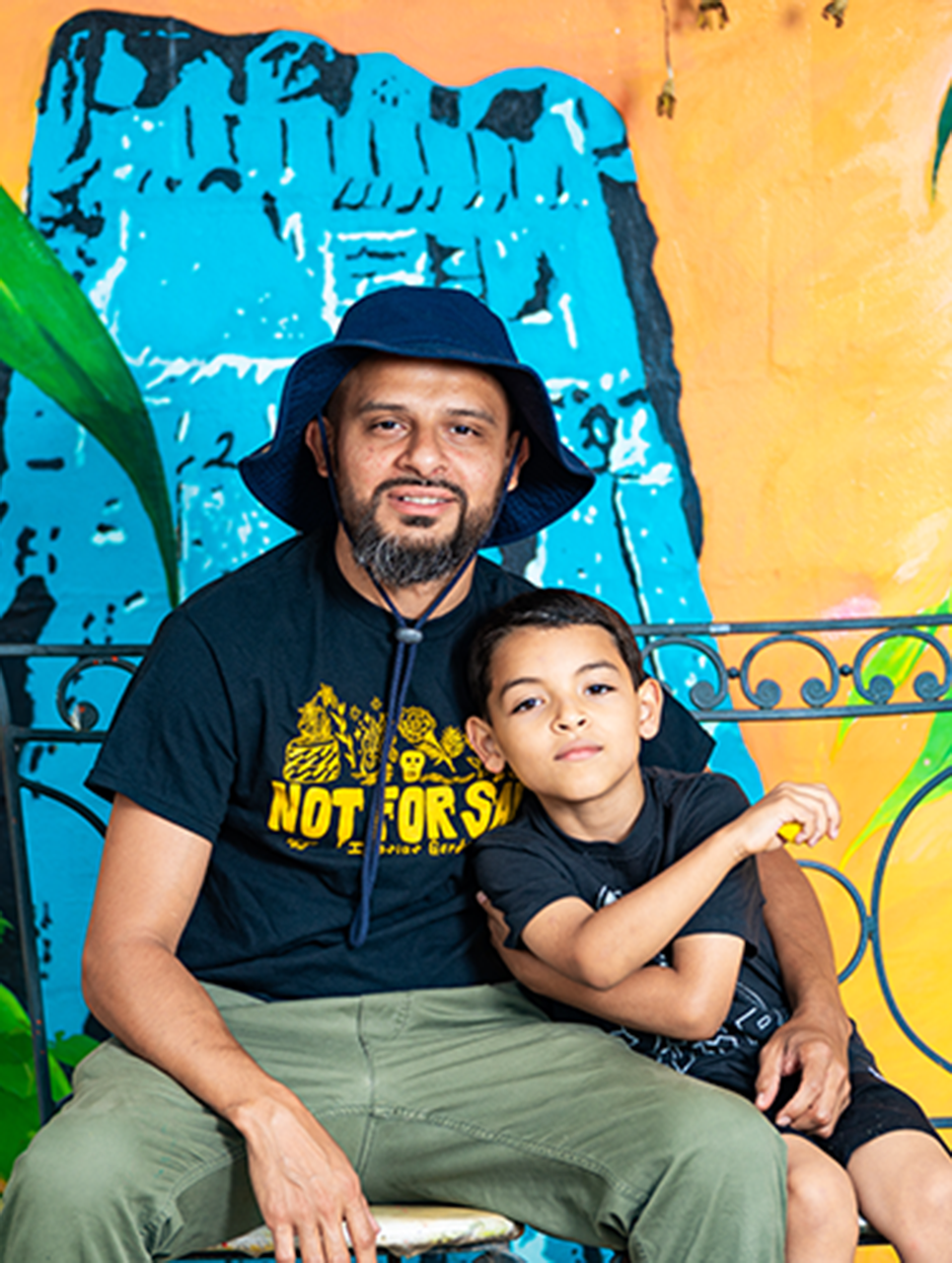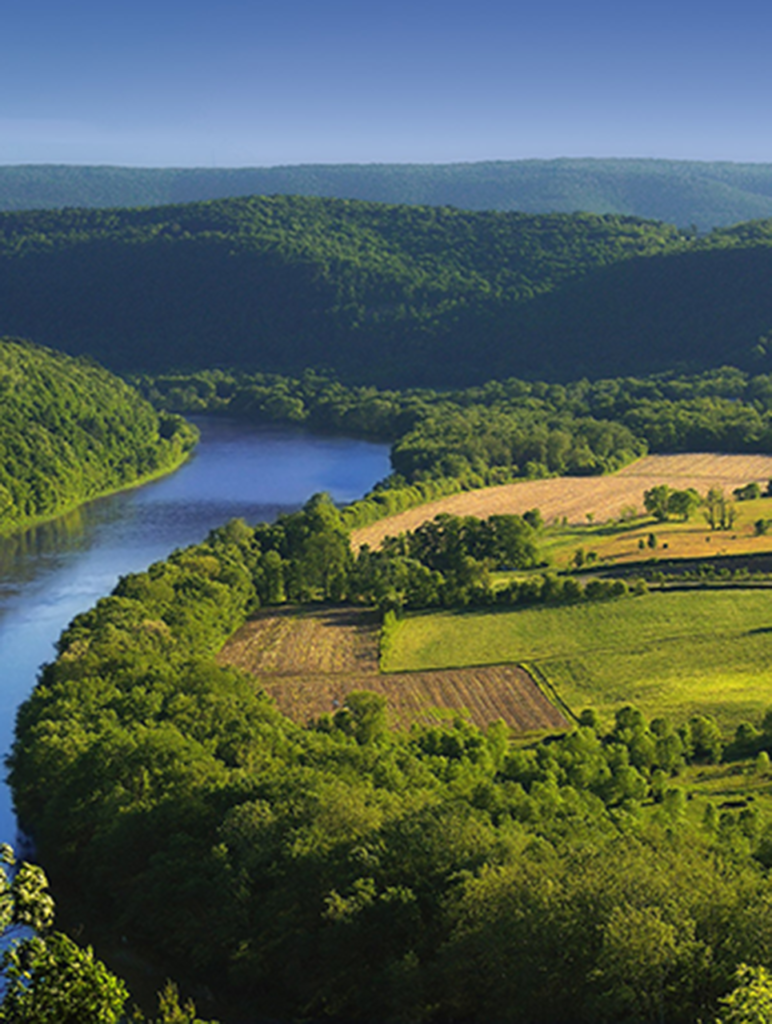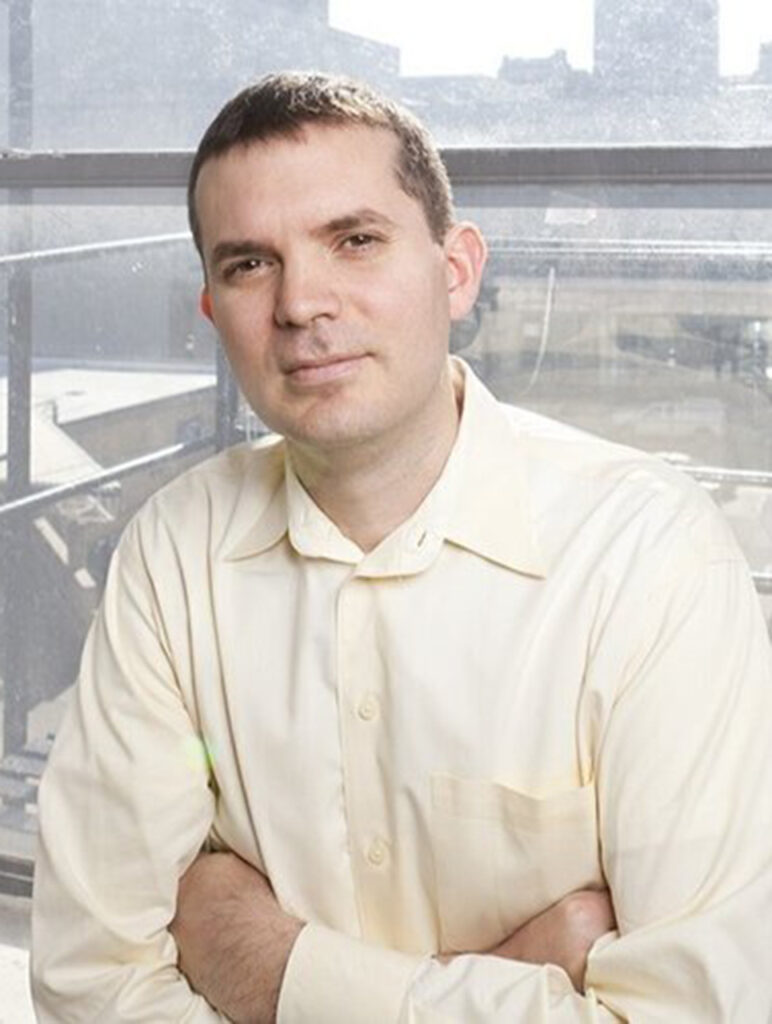In 1737, William Penn’s son Thomas and Penn’s secretary, James Logan — Logan Circle’s namesake — did one of the dirtiest deals in the country’s history. The Walking Purchase, specified that the Lenape Indians, whose homeland of Lenapehoking, stretched from the Chesapeake to New York, would sell Thomas Penn as much land as a man could cover in a day and a half on foot.
“Instead of one man walking, Penn hired three professional runners who traveled much farther than anticipated,” says Jeremy Johnson, 44, cultural education director of the Lenape Tribe of Indians, headquartered in Oklahoma’s Indian Territory since 1868. “We lost 1,200 square miles of land.”
Pennsylvania’s colonial authorities teamed up with the Haudenosaunee, or Iroquois, Confederacy to force the Lenape from their homeland. Five Lenape bands scattered to different states and Canada. “It was the first of seven removals we endured,” Johnson says.
That diaspora took a grim toll. In addition to the trauma of uprooting, massacres and government-sponsored bounty killings decimated the Lenape and other peoples. Scholars estimate that the pre-Columbian Native population was as high as 18 million. By 1900, that number had dropped to 237,000, according to David Hacker and Michael R. Haines.
The removals exacted another price.
“Skills like making canoes fell by the wayside because we settled in places that lacked the waterways of our homeland,” Johnson says. Elders died, and knowledge of certain ceremonies with them, he notes.
In the 1800s and 1900s, government- and church-run boarding schools for Indian children compounded that loss. The schools strove to strip Native children of their culture in order to “kill the Indian, save the man,” as Richard Henry Pratt (1840-1924) said. Pratt headed the Carlisle Indian Industrial School. In more than 350 schools nationwide, Native children were often beaten, starved, raped, locked in solitary confinement, and given a white name and clothing. Teachers washed out children’s mouths with lye when they spoke their tribal language.
“Some schools sold Native children as laborers for $10 each,” Johnson says. “We feel the effects of boarding schools to this day, not only in the loss of our language and traditions, but in the trauma that our elders deal with on a daily basis due to their horrific treatment while forced to attend.”
About 6,000 children died at Indian boarding schools, some estimates say. “The true toll is yet to be determined, but we believe that the numbers could be much higher,” Johnson says. Recently, the remains of 10 Native children buried at Carlisle were returned to their families.
There is much to heal.
“This country was built on stolen land with stolen labor,” says Chris Rabb, 52, a member of the Pennsylvania House of Representatives. Rabb, whose district includes part of Philadelphia, is drafting a resolution for each legislative session to begin by acknowledging that Pennsylvanians reside on land where the Lenape lived for 12,000 years.
“For those of us who claim Pennsylvania as our home, we must acknowledge those who came before us,” Rabb says. “It’s the least we can do. We must also recognize the transgenerational harm that’s been done. It brings us one step closer to true equality of peoples in the U.S.”
Rabb has had tough going. “You can only do so much when you’re in the [political] minority. I have no power structurally to make a bill come up for a vote, but I’ve begun a conversation about an issue that otherwise might not have been discussed.”
Land acknowledgement is a good starting point, says Johnson, noting that our language holds echoes of a Lenape legacy.
“Punxsutawney means ‘Mosquito Town,’” he says. “Tamaqua is ‘beaver.’ When people greet each other with ‘Hey!’ they don’t realize that it’s Lenape for ‘hello.’”
But the Lenape want more of a presence. “[Delaware Tribe] Chief KillsCrow and I are working to establish relationships with people and institutions in Pennsylvania and New Jersey, which are part of our original homeland,” Johnson says.
That desire for deeper connection with Lenapehoking seems to have long standing. Twenty-five years ago, the Churchville Nature Center (CNC) in lower Bucks County recreated a Lenape village as it would have been in the 1500s, just before colonists arrived.
“We introduce visitors, especially children, to the area’s Native heritage,” says Kirsten Becker, 57, CNC’s director. “School children get a hands-on experience. They grind corn with a mortar and pestle and make strings and ropes from natural material. When they gather wild edibles, they learn to leave some for animals and for seeds for next year. We incorporate the philosophy of living lightly on the land. Kids like the experience. It sparks their curiosity [about Native people].”
Collaboration between East Stroudsburg University (ESU) and the Delaware Tribe began in September 2018, says Margaret Ball, 61, ESU’s Vice President of Academic Affairs. “We hoped this partnership would provide education surrounding Native American culture, and eventually produce a scholarship for Native American students … to return to study on the land that their tribe formerly inhabited,” Ball says, “and that’s exactly what happened.”
Johnson took part in ceremonies at the program’s beginning.
“I saw leaves on the ground that are represented in our beadwork,” he says. “Now I know where they come from. I was the first person in my family in 250 years to reach down and touch the waters of the Delaware [River].”
In July 2021, Ursinus College and the Perkiomen Valley School District partnered with the tribe on the Welcome Home Project, which honors Montgomery County’s Lenape legacy. The project included a land acknowledgement, meetings and suggestions such as tribe-recommended books for different programs. The Perkiomen Valley School District established a Lenape Arboretum on its grounds to recognize the area’s Native roots and encourage “wonder, exploration, relaxation, learning” and students’ stewardship of the environment.
Last October, the Columns Museum of the Pike County Historical Society in Milford, PA, opened a new permanent exhibit: “The Lenape, Original People, Reconciling the Past, Embracing the Future.” The exhibit traces the tribe’s history and grew from a five-year collaboration between the Lenape and the historical society.
Here at home, organizers, artists and land practitioners just held a program on land sovereignty and protection that included a Native panelist at Iglesias Garden, a Kensington community garden. The Climate Justice Initiative, a Mural Arts Philadelphia program, sponsored the event. “We want a more just future,” says Shari Hersh, 63, director of environmental justice at Mural Arts, “and that future must include indigenous voices.”
Controversy sometimes arises about Pennsylvania’s Indian legacy. Schools with “R*dsk*ns” as a sports mascots ridicule Native culture, says Donna Fann-Boyle, 63, of Choctaw-Cherokee ancestry and the founder of Coalition of Natives and Allies (CNA). Begun in 2019, CNA works to eliminate these mascots and present Native American history accurately.
“Painting their faces red is a racist act that distorts students’ understanding,” Fann-Boyle says.
People need to see that we are neighbors, doctors, lawyers or parents. We’re just like them.”
— Donna Fann-Boyle, founder of Coalition of Natives and Allies
Research by sociologist Laurel R. Davis-Delano and her colleagues confirmed that the mascots “are psychologically detrimental to Native American students” and “for non-Native persons … are associated with negative stereotypes of Native Americans.” That stereotyping fuels tension between Natives and non-Natives, Davis-Delano found. Yet, some schools cling to them. For example, although Fann-Boyle has repeatedly told the Sayre Area School District in Bradford County and Bucks County’s Neshaminy School District that their mascots are racist, they continue to use them. The Neshaminy School District spent almost $500,000 in a court battle to defend “its right to keep a symbol that denigrates Indigenous Peoples,” Fann-Boyle says.
“They want to see us running around in headdresses, loincloths, and buckskins,” Fann-Boyle says. “People need to see that we are neighbors, doctors, lawyers or parents. We’re just like them.”
Representative Rabb has introduced legislation to ban such mascots.
Despite entrenched racism at some schools, others embrace respectful alliances with the Lenape.
“As a little boy living in Oklahoma, I always, always, heard about this place,” Chief KillsCrow said at a gathering at Ursinus. “Now, being able to live it … and be a part of it [lets us] feel for the very first time like we belong somewhere.”
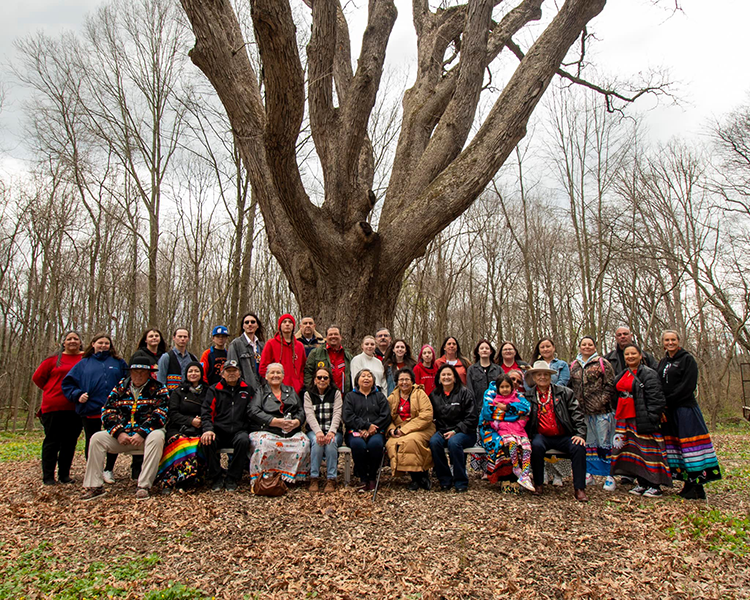
Resources
- Learn about the history and culture of the Lenape people at the following website: delawaretribe.org/culture-and-language
- Support efforts to end Native mascots by joining the Coalition of Natives and Allies. Visit coalitionofnativesandallies.org to review their petitions.
- A nine-minute YouTube video, “Delaware Nation Documentary,” sketches the history of the Lenape. Visit youtube.com/user/TheDelawareNation
- Read Anton Treuer’s “Everything You Wanted to Know about Indians But Were Afraid to Ask,” Borealis Books, 2012. About $16 new, $8 used on thriftbooks.com. There’s a version for young readers.
- Nicola I. Campbell’s “Shi-shi-etko,” a lovely picture book, deals with the days before a small Native American girl leaves her family for a boarding school, Groundwood books, 2005. For ages 4-7. About $17 new, $5 used from thriftbooks.com
- For more children’s books by and about Native Americans, see rebekahgienapp.com/native-americans

